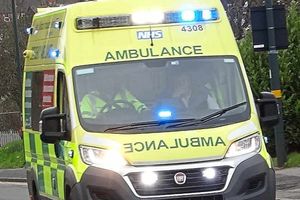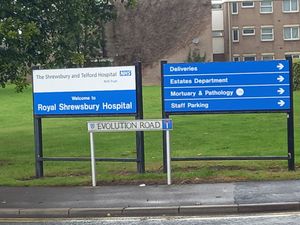Ambulance delays at Shropshire hospitals hit more than 8,500 in one year
More than 8,500 ambulances have faced delays of at least half-an-hour while handing over patients at the county’s two main hospitals over the past year, new figures have revealed.

Delays mean paramedics cannot respond to fresh 999 calls, bosses have warned.
In 1,655 cases, crews waited longer than an hour at Royal Shrewsbury Hospital (RSH) and Telford’s Princess Royal Hospital (PRH).
NHS rules state it should take no longer than 15 minutes.
Four hours plus
It comes as figures show around one in three patients had to wait longer than four hours at Shropshire’s A&E departments in the first three months of this year.
The figures for 2017/18, which have been reported by Shropshire Clinical Commissioning Group (CCG), also show that 62 patients were left waiting on trolleys for more than 12 hours between October last year and the end of March.
The county’s emergency departments have been facing high demand and Shrewsbury and Telford Hospital NHS Trust (SaTH), which runs RSH and PRH, has struggled to recruit staff.
Hospital bosses, however, recently recruited their first A&E consultant in more than five years.
An average of about 690 ambulances a week arrived at the county's A&E departments in 2017/18.
During the same period, almost 124,000 people attended A&E in Shropshire – the most SaTH has ever seen.
Demand
West Midlands Ambulance Service spokesman Murray MacGregor said: “At times of peak demand, unfortunately delays do occur at some hospitals.
"West Midlands Ambulance Service continues to work closely with all hospitals in the region to tackle such issues and operates a number of measures to help ensure ambulances are able to offload patients as quickly as possible.
“The trust’s strategic operations cell continuously monitors the level of demand at each hospital so that potential delays can be highlighted early and resolved.
“In addition, the trust uses hospital ambulance liaison officers to help minimise delays and ensure ambulances are free to respond to the next 999 call as quickly as possible."
A report to Shropshire CCG's governance board says that ambulance handover times did show an improvement in 2017/18 compared to the previous year.
There has been a five per cent reduction in delays greater than 30 minutes and a 17 per cent reduction in those greater than an hour.
Handover nurses
Shropshire CCG says it has continued its investment in "handover nurses" and is committed to driving down delays.
Sara Biffen, deputy chief operating officer at SaTH, said: “It is pleasing to note that there have been improvements in ambulance waiting times both over the course of the year and after the demands we saw on our hospitals at the start of the year.
“Whilst we know that ambulance waits are still too high, we are working hard with our colleagues both from the West Midlands Ambulance Service and other parts of the health and social care community to improve this.
“In 2017/18, we saw an average of around 690 ambulances arriving at our A&E departments every week – almost 100-a-day. Between the start of January and the end of March, that figure rose to nearly 730 ambulances every week.
“In the last year, we have seen our highest ever level of A&E demand, with almost 124,000 attendances, as well as our highest ever level of emergency admissions, with a 13 per cent increase from almost 55,200 in 2016/17 to more than 62,500 in 2017/18.
“To help us cope with this demand we have taken measures to improve work between the hospital ambulance liaison officers and our own handover nurses and A&E staff.
“I would like to once again take this opportunity to thank our own staff and our colleagues at West Midlands Ambulance Service for their continued dedication and hard work.”





